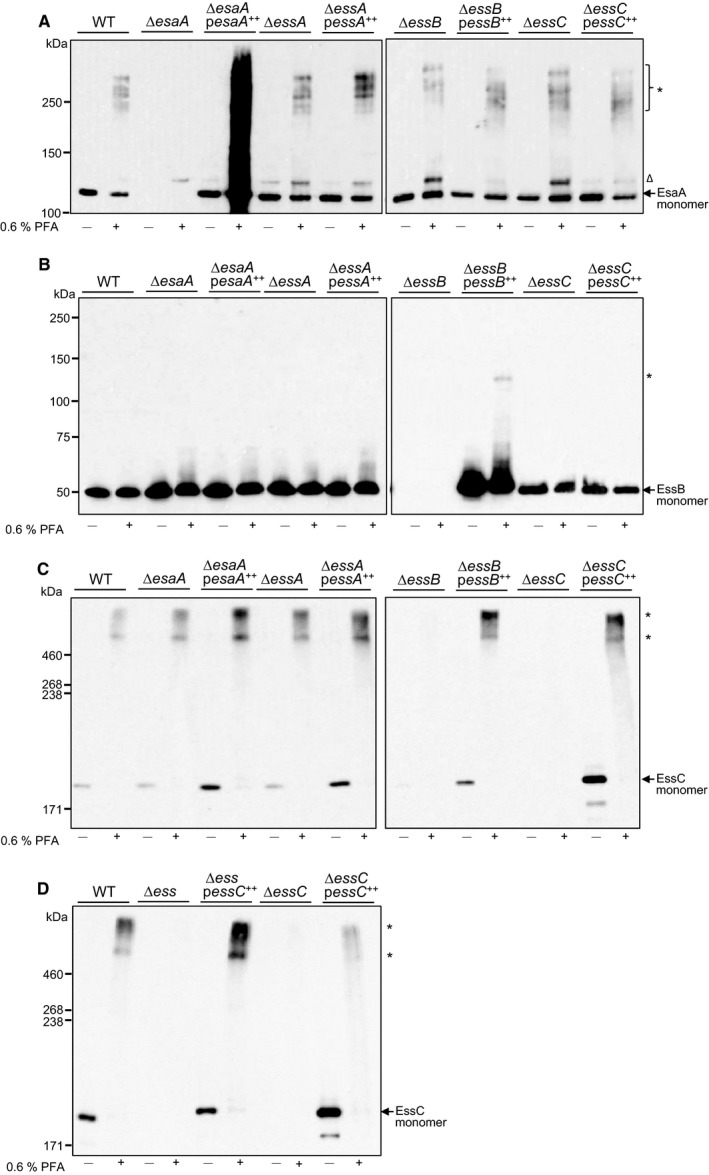Figure 3.

Formaldehyde‐mediated crosslinking of EsaA, EssB and EssC in whole cells. (A–C) Whole cells of strain RN6390 (WT) or the isogenic esaA, essA, essB or essC deletion strains, either harbouring the empty pRMC2 vector (lanes labelled ∆esaA, ∆essA, ∆essB, ∆essC respectively) or pRMC2 overproducing a his‐tagged variant of the indicated gene (∆esaA pesaA ++, ∆essA pessA ++, ∆essB pessB ++, ∆essC pessC ++) or (D) Whole cells of strain RN6390 (WT), the isogenic ∆esaA – SAOUHSC_00269 deletion strain or the isogenic essC deletion strain, either harbouring the empty pRMC2 vector (lanes labelled ∆ess and ∆essC respectively) or pRMC2 overproducing a his‐tagged variant of EssC (∆ess pessC ++ or ∆essC pessC ++) were treated with paraformaldehyde (PFA) as described under Experimental Procedures. Following quenching, cells were lysed and membrane fractions prepared, and 1 μg of total membrane protein loaded on a Bis‐Tris gel containing 8% acrylamide (A and B) or 2 μg of total membrane protein loaded on a SDS gel containing 5% acrylamide (C and D), samples were transferred to nitrocellulose membrane and proteins detected using polyclonal antibodies raised against A. EsaA, B. EssB or C and D. EssC, as indicated. Crosslinked products are indicated to the right with an asterisk; the open triangle indicates a nonspecific band that is detected with the EsaA antiserum.
